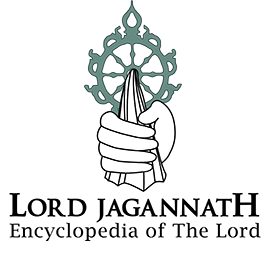The History of the Car Festival of Lord Jagannath
Some historians contend that the Car Festival or the Rath Jātrā of Shri Jagannath owes its origin to a Buddhist tradition. According to Dr. R.L. Mitra, it was used by the Buddhists to celebrate the advent of Lord Buddha and in support of his statement, he has referred to the accounts given by Fahien (4th century A.D.), a celebrated Chinese traveller who travelled extensively in India and other Asian countries. Fahien has stated that he had seen Car Festival at Khotan in the province of Suikiang in West China. He even observed that the king of Khotan sprinkled water on the chariot and cleaned it with a broomstick before the image of Buddha was brought and installed over it. According to Fahien it was in the month of June (Āṣāḍha) when he had the opportunity of seeing the festival. Fahien also saw the car festival at Pāṭaliputra and that too on the birth anniversary of Lord Buddha.
But other historians differ in their opinion and contend that car festivals were in use among the Jainas and the Saivites as well. According to Henrietta Caraciolo, the Car Festival was also observed in Sicily, an island in the Mediterranean comprising a region of Italy. She states, “A colossal Car is dragged by a long team of buffaloes through the irregular and ill-paved streets. Upon this are erected a great variety of objects, such as the Sun, the Moon and the principal planets, set in rotary motion and diminishing proportionately in size as they approach the summit of the structure.
This erection is in itself really improving, sumptuously decorated and put in movement in honour of her, who gave birth to the God of Charity. But its functions recall to mind the famed Car of Jagannath.” (Memoirs of Henrietta Caraciolo p. 21). In Sicily it is still in vogue and is observed in the month of August.
The description of the Colossal Car having the Sun, the Moon and the planets reminds us of our Konark temple which was built in the 13th century A.D.. This temple resembles a chariot of the Sun having wheels and horses attached to it at the bottom.
It is, however, difficult for us to accept the idea that the Ratha Jātrā has been borrowed from the Buddhist regime, as the Vedas contain the word ‘Ratha’ (Śrīksetra by Sundarānanda Vidyāvinod, p. 169) and in Kaṭhopaniṣad we find a śloka –
ātmānam rathinam viddhi
śarīraṁ rathaṁ eva tu,
buddhiṁ tu sārathiṁ viddhi
manaḥ pragrahameva ca (1:3:3:)
(when) soul becomes the voyager
and body the chariot
will becomes the strategist
and wisdom the pilot.
Although here ‘Ratha’ has been symbolically used, nevertheless, it indicates that the idea of ‘ratha’ is absolutely of Hindu origin. Ratha as the vehicle during wars finds mention in the Ramayana, Mahabharat and Śrimadbhāgavata as well. The Vedas have mentioned the Rathas of Sūrya and Viṣṇu (ibid. Page- 170).
Annals and antiquities of Odisha do not give us a clear idea as to when actually the car festival started at Puri, but the Anargha Rāghava Nāṭakam by Murāri Miśra, who lived in the 9th century A.D. has a reference to the Ratha-Jātrā on the sea-coast. His character in the play does not, of course, mention the name of the place but says that he would go to witness the congregation during the Ratha-Jātrā which takes place near the sea-beach. So we can safely guess that it is a practice here at Puri which is nearly a thousand years old.
The cult of Jagannath embodies within itself the principles of secularism, religious tolerance, equality of caste and creed and of socialism. The religious culture of Orissa is synonymous with the culture of Lord Jagannath which is basically autochthonous in nature and spirit. The car festival is not only a colourful display of the Hindu religion and an occasion for offering unrestricted devotion to the Lord of the Universe, Jagannath, but it is also an occasion for the sense of fraternity and ecstatic involvement of the masses closing all barriers of our multicultural and multilingual Indian society. As it appears, the whole of India keeps its eyes fixed on this particular day, the day of Ratha-Jātrā when masses assemble at Puri by millions to have a glimpse of the Daru Devata on his car, and enjoy a sense of spiritual fulfillment. Lord Jagannath keeps on showering his blessings upon the pilgrims who assemble on the Bada Danda that day, and consider this opportunity of seeing the Lord on his Nandighosa as their ultimate achievement of life, the rarest of the rare that a Hindu can aspire for.
(This article is an excerpt from the author’s writing from the book “Car Festival of Lord Jagannath Puri”, which was also edited by the author. The said book was released by the Honourable President of India on 25-07-1994 at Rashtrapati Bhawan, New Delhi. It was dedicated To The People and Nation by the Honourable Governor of Orissa on 17-08-1994 at The Universe, Cuttack.)
